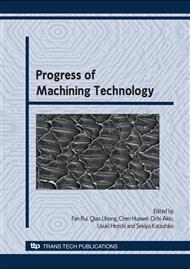p.343
p.347
p.351
p.355
p.359
p.363
p.368
p.372
p.376
Ultra-Precision Machining of Dies for Microlens Arrays Using a Diamond Cutting Tool
Abstract:
Patterning of numerous microlenses on a surface improves the optical performance of components such as liquid crystal displays. A cutting method using a diamond tool is examined to fabricate a molding die that employs arbitrary array patterns to mold millions of microlenses. The present paper investigates machining of microlenses on the order of 2 kHz, using a piezo-actuated micro cutting unit and a synchronous control system of the cutting unit with an NC controller. Experiments using this system revealed that it is possible to machine a large number of microlenses on a molding die with high precision.
Info:
Periodical:
Pages:
359-362
Citation:
Online since:
February 2009
Authors:
Keywords:
Price:
Сopyright:
© 2009 Trans Tech Publications Ltd. All Rights Reserved
Share:
Citation:


